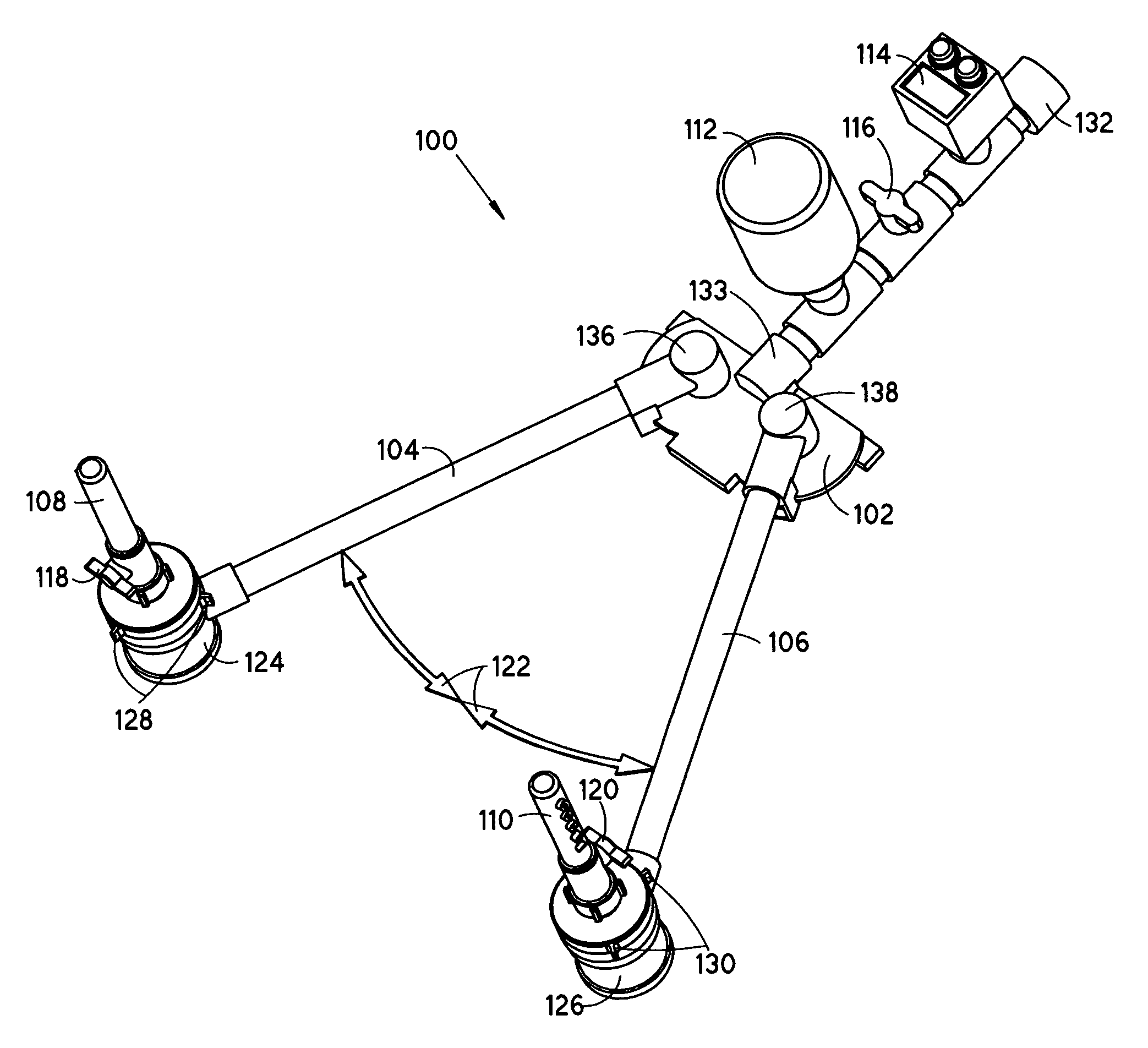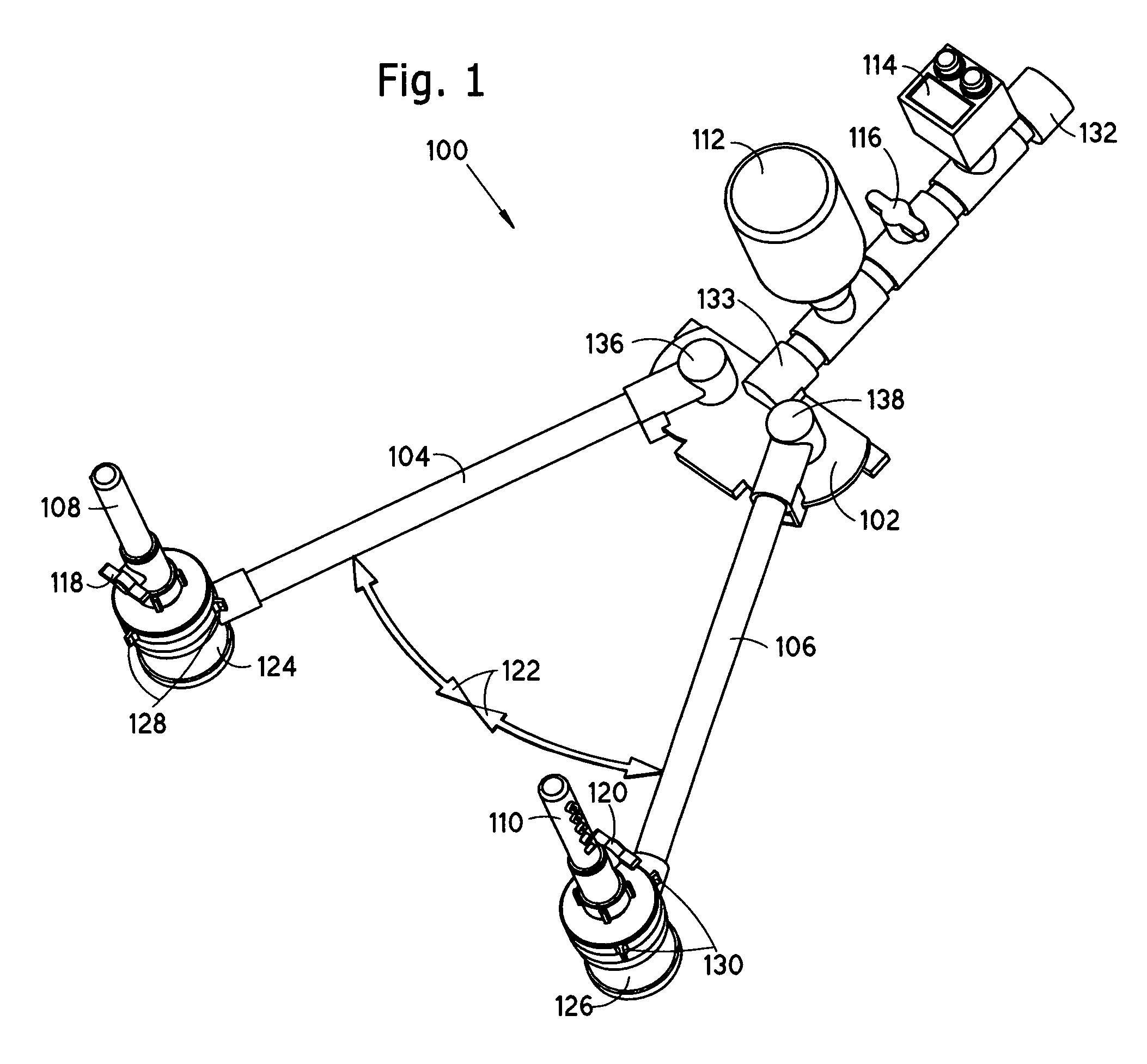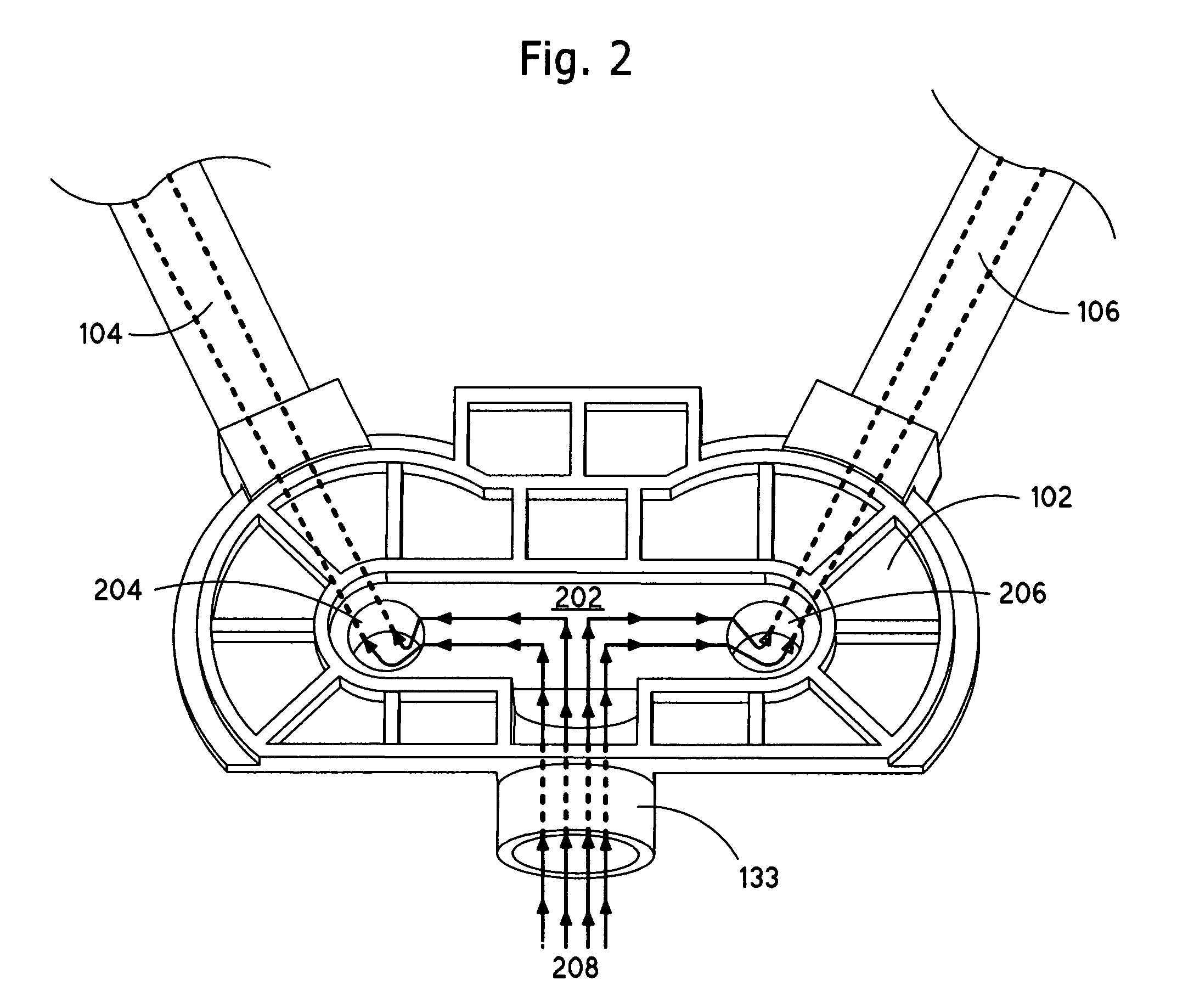Water conserving adjustable sprinkler system
a technology of adjustable sprinklers and water conserving water, which is applied in the field of adjustable sprinkler systems, can solve the problems of increasing the chance of various types of mildew, soil-born fungal diseases such as crown rot, and the most rotary-designed sprinklers will not operate properly, so as to reduce overwatering and water waste, and maintain water. the effect of preserving water
- Summary
- Abstract
- Description
- Claims
- Application Information
AI Technical Summary
Benefits of technology
Problems solved by technology
Method used
Image
Examples
Embodiment Construction
[0083]Referring to the figures, like elements retain their indicators throughout the several views.
[0084]FIG. 1 is a perspective view of Adjustable Sprinkler System 100 of the present invention. Pivot Water Feed Housing 102 is a somewhat hollow housing made of a rigid material such as plastic. Pivot Water Feed Housing 102 has a First Pivot Arm Support 136 pivotally attached to the top surface. First Arm 104 is a section of rigid tubing that extends from First Pivot Arm Support 136 and has First Sprinkler Unit 124 attached opposite First Pivot Arm Support 136.
[0085]First Sprinkler Unit 124 is a common sprinkler unit for use with this system which does not encompass any new technology rather uses the basic technology seen in common rotary and oscillating sprinklers currently on the market. Most rotary and oscillating sprinklers use a water turbine and gear reduction system with an over pressure valve and direction shift valve. In this preferred embodiment, First Adjustable Zone Stops ...
PUM
 Login to View More
Login to View More Abstract
Description
Claims
Application Information
 Login to View More
Login to View More - R&D
- Intellectual Property
- Life Sciences
- Materials
- Tech Scout
- Unparalleled Data Quality
- Higher Quality Content
- 60% Fewer Hallucinations
Browse by: Latest US Patents, China's latest patents, Technical Efficacy Thesaurus, Application Domain, Technology Topic, Popular Technical Reports.
© 2025 PatSnap. All rights reserved.Legal|Privacy policy|Modern Slavery Act Transparency Statement|Sitemap|About US| Contact US: help@patsnap.com



